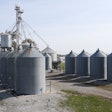Animal agriculture — and, ultimately, the feed industry — made headlines again this week with the U.S. Food & Drug Administration’s (FDA) final proposed rule to amend the Veterinary Feed Directive (VFD) regulation. The goal, of course, is to eventually phase out the non-medicinal use of antibiotics in the feed and water of food-producing animals, i.e. for production purposes, in hopes of protecting humans against the cultivation of antibiotic-resistant bacteria. Under the new rule, the status of all medically important antibiotics will join the other categories as VFD drugs, which require a veterinarian’s prescription.
According to a statement issues by the FDA on Dec. 11, the animal pharmaceutical companies are urged to “voluntarily remove growth enhancement and feed efficiency indications from the approved uses of their medically important antimicrobial drug products and move the therapeutic uses of these products from over-the-counter (OTC) availability to marketing status requiring veterinary oversight.” They have three months to notify the FDA of their intention to comply and three years to do so; the main drug companies have publicly said they will voluntarily comply.
However, production agriculture’s detractors argue that the “voluntary” status isn’t enough because no mandate, metrics or consequences have been set in place. Whether the public realizes it, the industry has been moving away from using medically important antibiotics for some time, focusing on immunity and the use of good farming practices to support animal health and welfare.
According to Daniel Schaefer, professor and department chair, UW-Madison’s Department of Animal Science, the ban of over-the-counter antibiotics isn’t going to make much of an impact on animal agriculture because most responsible producers have already limited their usage.
“It should be understood that the widespread use of antibiotics for purposed of growth promotion is not a common practice,” Schaefer stated on a Wisconsin Public Radio segment. “The FDA is ensuring there isn’t long-term, low-dosage administration under any circumstance other than that which is overseen by a vet. I would say the impact is not a really big negative impact on livestock production operations, which are well managed, because the technology is not used.”
The major challenge for producers lies in the predicted complications posed by trying to obtain access to a veterinarian’s prescription for antibiotics they had grown accustomed to purchasing at the local cooperative.
“AFIA continues to be concerned about the lack of veterinarians trained to complete VFDs as well as the lack of large animal veterinarians in general,” says Richard Sellers, senior vice president of the American Feed Industry Association (AFIA). “There are some 15 or so chemical entities that are approved as animal drugs and over 120 different uses that will be affected by changes FDA is proposing.”
For feed mills, however, the proposed rule will ease the record keeping burden by lessening the amount of time a facility is required to retain the VFD record from two years to one, “thus eliminating the need for two separate filing systems: One for non-VFD feed records (one-year record retention) and one for VFD feed records (two-year record retention).”
The proposed rule can be found at regulations.gov, where written or electronic comments on the final proposal may be submitted to the agency by March 12, 2014.

















